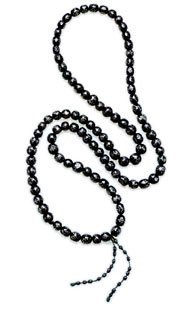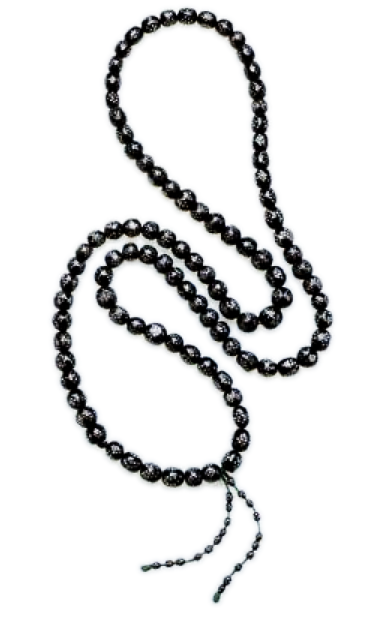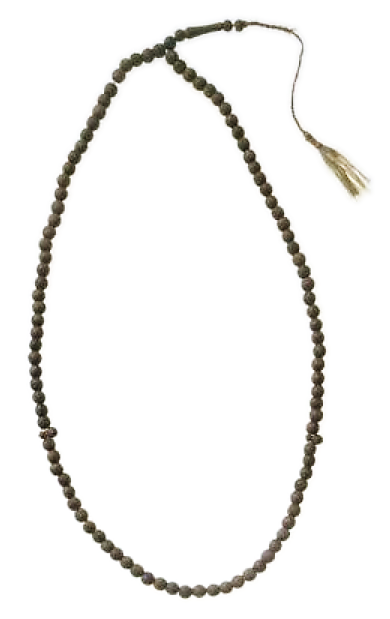The Muslims probably derived the concept of prayer beads from the Buddhists. When this happened, however, is uncertain. Called subha, meaning "to exalt," the Islamic rosary has ninety-nine counting beads in addition to an elongated terminal one, known as the Iman or "Leader," "pillar," or "minaret" (below right).
The counting beads are used to recite the ninety-nine attributes of God the Holy, the Mighty, the Forgiver, and so forth. The one hundredth bead is reserved for saying the name of God, Allah. Devotional phrases recited on the prayer beads include the tahmid, "God be praised," and the tahlit, "There is no deity but God." Great stock is put into uttering the one hundred names of God and chanting the formulas. A prophet said, "There are ninety-nine names of God, and whoever recites them shall enter into Paradise," and "Whoever recites the tasbih and the tahmid, a hundred times morning and evening, will have all his sins forgiven." Ultraorthodox, conservative Muslims were, at the time of the prayer beads' appearance, opposed to them. During the thirteenth century Ibn al-Hajj complained that the exaggerated use and esteem of the subha was contrary to the primitive simplicity of Islam. Islamic beads are often made of wood, including acacia, olivewood, ebony, sycamore, and sandalwood. Materials such as bone, ivory, coral, amber, carnelian, agate, lapis lazuli, and glass have also been used. In Mogul India (1526–1756), pearls, rubies, emeralds, and sapphires were the beads of the court. Beads of date pits from the sacred cities of Mecca and Medina are revered. Mecca is a huge bead emporium, and a vast array of beads imported from all over the world are sold there. Wooden beads that have been dyed red and immersed in water from the holy well of Zemzem are taken away from Mecca by pilgrims who have made the hajj, or pilgrimage, to the sacred Muslim city.
Islamic Beads » Prayer Beads » The History of Beads: From 100,000 B.C. to the Present
Lois Sherr Dubin (2009) Abrams Publishers, Inc.






